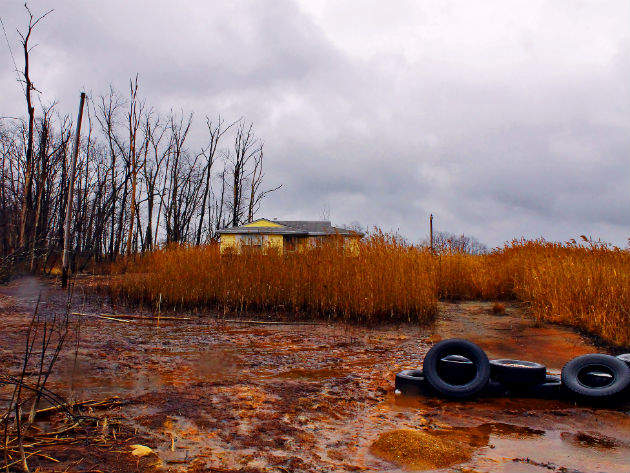

Acid rock drainage is responsible for huge financial and environmental costs for miners but a Canada-based company may have found an innovative way to tackle the problem, while simultaneously slashing operations’ carbon footprints.
Both acid rock drainage (ARD) and the CO2 emissions associated with running fossil fuel-burning electricity generators are big issues for remote mines. While the emissions contribute to the global march of climate change, ARD – or the outflow of acidic water from metal and coal mines – can harm water systems, wetlands and other environments and habitats.
“One of the major issues of ARD is that it requires perpetual treatment,” explains Dylan Jones, CEO of Terra CO2 Technologies (Terra), a Vancouver-based company set-up with the dedicated goal of tackling both excess atmospheric CO2 and ARD. “Existing ARD treatment systems are quite low-tech and in many cases there are no long-term solutions,” he adds.
“Moreover, on top of the environmental cost associated with ARD, financially, the perpetual nature of past and current ARD is enormous. For example, the Faro mine complex in Yukon Territory will require $1bn of public funds to clean-up the site and prevent future ARD from entering the water stream.”
Developing an emissions strategy
Terra’s solution tackles the ARD issue using sequestered CO2, effectively killing two birds with one stone. “Our technology allows mining companies to treat acid-generating waste effectively and permanently. Sulphide mineral tailings and acid drainage enter the system and are converted to stable (non-acid-generating) carbonate minerals,” Jones explains.
“This is achieved by reacting the sulphides and introducing a CO2-rich solution that allows carbonate minerals to form. The carbonate minerals we produce are benign and do not require permanent underwater storage.”
The original idea for this technology came from mining executive Doug Eaton, now Terra president, during countless day-long drives between exploration sites in the vast and sparsely populated Yukon territory in western Canada. “From there the technology underwent a few years of research at UBC while financed by Strategic Metals [where Eaton is director and CEO] and after several research progressions and the issuance of two patents the Strategic project was spun out as a company: Terra CO2 Technologies,” Jones says.
Ultimately, Terra’s technology could reduce or even eliminate the long-term stewardship costs associated with ARD, providing major savings for mines, as well as cutting costs related to carbon taxes or cap and trade policies. But Jones is realistic in recognising that there’s another long road ahead.
Mine waste solution testing
Currently still on the lab bench, the next step for the Terra system is to enter what Jones calls “the pre-pilot stage”, after which the company hopes to have a pilot plant up and running by this July. “The pre-pilot stage will take many of the components and systems that we have proved to work in our current stage and scale them to learn more about what types of inputs and outputs we can anticipate,” Jones explains.
“This stage will also be essential for Terra to learn more about its economic potential as we learn about how we can efficiently build plants on operating mine sites. The proceeding stage will be focused on making strategic partners and building on-site pilot plants that can test the technology in-situ.”
Then it will be time to expand further, another process that will bring up various obstacles, according to Jones. “The challenges we are facing on scale-up are fairly well known to us in comparison with our research and development of the technology,” he says. “These will include increased energy use because of increased volumes of materials, rising cost of membranes for our electrochemical cells and rising costs because of the increased size of components.”
Using this technology in the field rather than a lab also raises a host of practical problems. “Other than obvious challenges, such as weather and distance from support or in-laboratory research teams, Terra CO2’s technology will be challenged with logistical issues such as the transport of inputs and outputs,” Jones remarks, adding that one challenge that’s unique to Terra CO2’s technology is the site-specific nature of mine waste.
“Before a pilot plant is constructed, an exhaustive analysis of the ARD will be performed for the site. This will allow fabrication teams to build pre-treatment plants specifically targeting contaminants in the local groundwater.”
In terms of where funding will come from, parent firm Strategic has already invested $1m in Terra, which plans to raise an additional $4m. The company has also attracted innovation grants from the National Research Council’s Industrial Research Assistance Program, MITACS, and BCIC Ignite.
A low-carbon future for industry
If all goes to plan, Terra is nothing if not ambitious about the future potential of its pioneering system, which is currently in the semi-final of the $7.5m Carbon XPRIZE, a four-and-a-half-year competition designed to address global carbon emissions by incentivising innovative solutions to convert CO2 from a liability into an asset.
“Our plans are to scale-up outside Canada, potentially with strategic partners to have the technology be applicable at many international mine sites with ARD issues,” Jones notes.
And the mining sector isn’t the only one that could benefit. “While it is very early to say what our impact will be with other sectors and industries we have identified potential in the cement production, fertiliser production and electricity (hydro-carbon burning) generation industries,” Jones remarks.



